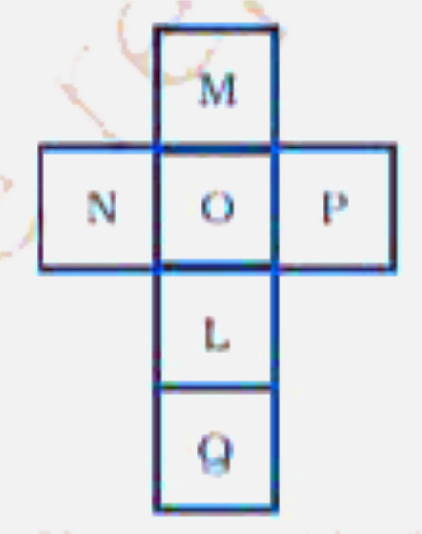There are two die A and B both having six faces. Die A has three faces marked with 1, two faces marked with 2, and one face marked with 1, two faces marked with 2, and one face marked with 3. Die B has one face marked with 1, two faces marked with 2, and three faces marked with 3. Both dices are thrown randomly once. If E be the event of getting sum of the numbers appearing on top faces equal to x and let P(E) be the probability of event E, then
When x = 4, then P(E) is equal to
37216
64216
27216
31216.
Step by step video solution for There are two die A and B both having six faces. Die A has three faces marked with 1, two faces marked with 2, and one face marked with 1, two faces marked with 2, and one face marked with 3. Die B has one face marked with 1, two faces marked with 2, and three faces marked with 3. Both dices are thrown randomly once. If E be the event of getting sum of the numbers appearing on top faces equal to x and let P(E) be the probability of event E, then When x = 4, then P(E) is equal to by Maths experts to help you in doubts & scoring excellent marks in Class 12 exams.
Topper's Solved these Questions
- BOOK - FIITJEECHAPTER - PROBABILITYEXERCISE - SOLVED PROBLEMS (OBJECTIVE) Comphrehension2videos
PROBABILITY
- BOOK - FIITJEECHAPTER - PROBABILITYEXERCISE - ASSIGNMENT PROBLEMS (SUBJECTIVE)11videos
PROBABILITY
- BOOK - FIITJEECHAPTER - PROBABILITYEXERCISE - SOLVED PROBLEMS (SUBJECTIVE)8videos
PROBABILITY
- BOOK - FIITJEECHAPTER - PERMUTATIONS & COMBINATIONSEXERCISE - NUMERICAL BASED3videos
PERMUTATIONS & COMBINATIONS
- BOOK - FIITJEECHAPTER - PROGRESSION & SERIES EXERCISE - NUMERICAL BASED3videos
PROGRESSION & SERIES
Similar Questions
A dice marked with digit {1,2,2,3,3,3}, thrown three times, then the probability of getting sum of number on face is six, is equal to ;- 7216
View SolutionA ordinary cube has four plane faces, one face marked 2 and another face marked 3, find the probability of getting a total of 7 in 5 throws.
View Solution
Knowledge Check
- Question 1 - Select One
There are two die A and B both having six faces. Die A has three faces marked with 1, two faces marked with 2, and one face marked with 3. Die B has one face marked with 1, two faces marked with 2, and three faces marked with 3. Both dices are thrown randomly once. If E be the event of getting sum of the numbers appearing on top faces equal to x and let P(E) be the probability of event E, then P(E) is maximum when x equal to
A5B3C4D6 - Question 2 - Select One
There are two die A and B both having six faces. Die A has three faces marked with 1, two faces marked with 2, and one face marked with 3. Die B has one face marked with 1, two faces marked with 2, and three faces marked with 3. Both dices are thrown randomly once. If E be the event of getting sum of the numbers appearing on top faces equal to x and let P(E) be the probability of event E, then P(E) is minimum when x equals to
A3B4C5D6 - Question 3 - Select One
The mean of the numbers obtained on throwing a die having written 1 one three faces, 2 on two faces and 5 on one face is
A2B3C4D5
The net shown below can be folded into the shape of a cube. The face marked with the letter L is opposite to the face marked with which letter?
 View Solution
View SolutionD1,D2 are two cubical dice, with faces of D1 marked 1,2,2,3,3,3 and faces of D2 marked 1,1,2,2,3,3. One of the 2 dice is selected at random and tosses 3 times. If the sum of the numbers obtained is equal to 6 then the probability that the selected die is D1 is
View SolutionA six-faced unbiased die is thrown twice and the sum of the numbers appearing on the upper face is observed to be 7. The probability that the number 3 has appeared atleast once, is
View SolutionA six -faced unbiased die is thrown twice and the sum of the numbers appearing on the upper face is observed to be7. The probability that the number 3 has appeared at least one ,is
View SolutionA dice has four blank faces and two faces marked 3. The change of getting a total of 12 in 5 throws is
View Solution

